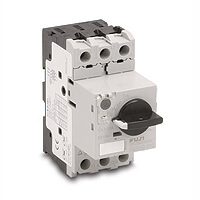Had some more thoughts on it today and flicked through my regs. If we look at the definition of a circuit
''An assembly of electrical equipment supplied from the same origin and protected against overcurrent by the same protective device(s)''
Note the (s) on the end. This could be our 3xSP mcb's could it not?, not indifferent from a Bs88 fuseboard where the fuses can be removed individually imo.
I think the installation meets the definition of circuit hence complies with the one shared neutral.
BS7671 points to this setup with the previously mentioned reg 559.6.2.3-the only contentious issue i can think of is the 'device' this reg speaks of. Is it reffering to OPD or will a simple isolator also be a device?-i suggest it will. It doesnt give an indication of where this device needs to be located in the circuit either.
The neutral conductor is sized the same as the line conductors and adequate to carry any expected current (including harmonic) regardless of whether 1,2 or 3 rows of lighting are switched on.
Thanks for the great response so far, an interesting topic.
Regards
''An assembly of electrical equipment supplied from the same origin and protected against overcurrent by the same protective device(s)''
Note the (s) on the end. This could be our 3xSP mcb's could it not?, not indifferent from a Bs88 fuseboard where the fuses can be removed individually imo.
I think the installation meets the definition of circuit hence complies with the one shared neutral.
BS7671 points to this setup with the previously mentioned reg 559.6.2.3-the only contentious issue i can think of is the 'device' this reg speaks of. Is it reffering to OPD or will a simple isolator also be a device?-i suggest it will. It doesnt give an indication of where this device needs to be located in the circuit either.
The neutral conductor is sized the same as the line conductors and adequate to carry any expected current (including harmonic) regardless of whether 1,2 or 3 rows of lighting are switched on.
Thanks for the great response so far, an interesting topic.
Regards


